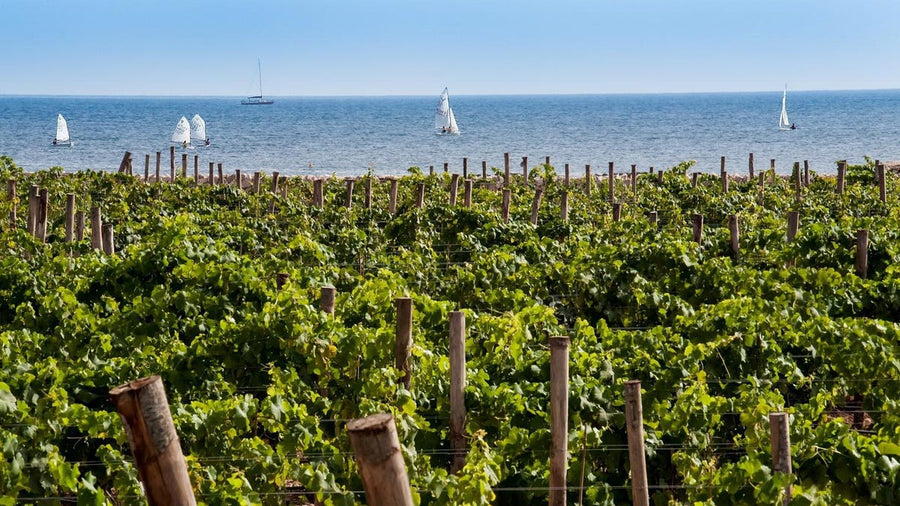
Blessed with consistently bright sunshine and reliably moderate rainfall, Sicily's classic Mediterranean climate is ideally suited to the production of wine grapes.
The warm, dry climate means that mildews and rots are kept to a minimum, particularly in well-ventilated areas that benefit from coastal breezes. This low disease pressure means that chemical sprays are hardly needed, and much Sicilian wine is produced from organic grapes.
Sicily's soils, and the mountains from which they come, are of particular interest when it comes to studying the island's viticulture. Etna, the towering stratovolcano, dominates the island's eastern horizon and is the source of the dark, mineral-rich soils that characterise the Etna DOC vineyards. The vines are now planted higher up the volcanic slopes, to take advantage of the cooler air and richer soils. Eighty kilometres to the south, the Iblei Mountains occupy a special place in the wines of eastern Sicily. On their lower slopes and the coastal plains below, the DOCs of Syracuse, Noto, Eloro and Vittoria stretch from east to west, forming a crescent that mirrors the arc of the coastline. In western Sicily, the volcanic hills are less dramatic, but they have an equal influence on soil types.
The main grape varieties used in Sicilian viticulture are a combination of indigenous varieties (those historically grown on the island) and more recent and fashionable imports. Nero d'Avola and Catarratto are the most important indigenous varieties, occupying 16% and 32% of Sicily's wine-growing area respectively in 2008. The huge volume of Catarratto juice created each year means that much of it is shipped to cooler Italian wine regions, where it is used to increase the body and weight of otherwise thin and overly acidic wines.
Read More
























